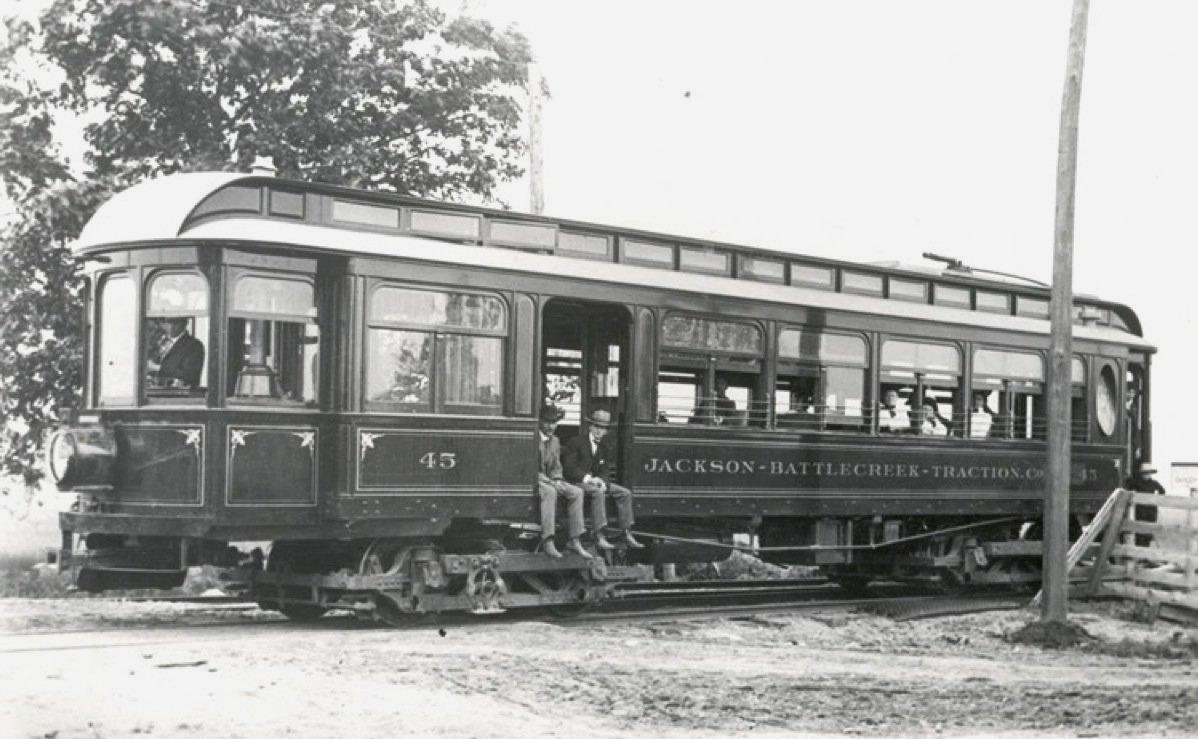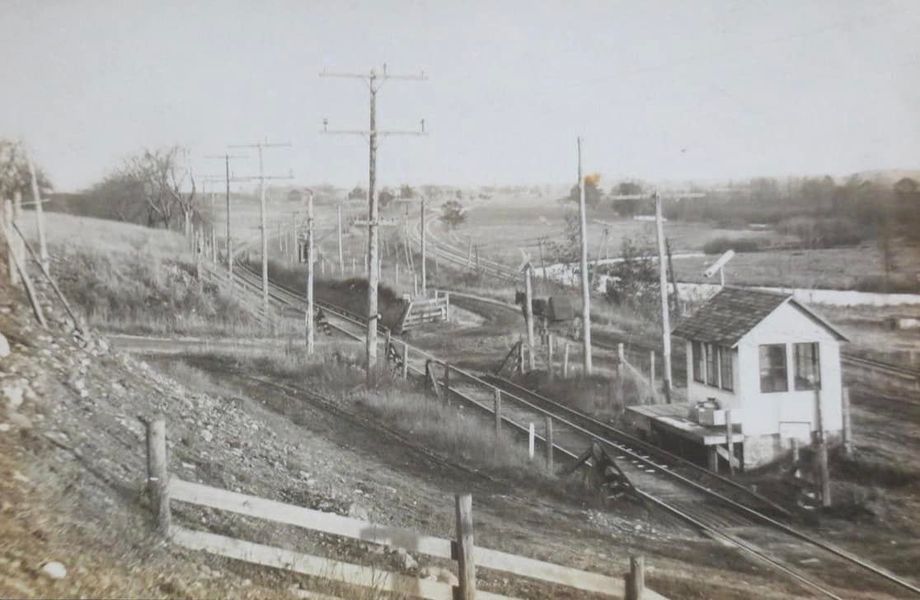- Details
- Hits: 2688
Railroad: Jackson and Battle Creek Traction Company
Built → Jackson & Battle Creek Traction Co. → Michigan United Railway
Built: 1903
Operated for 3 years.
Became: Michigan United Railways - 1906
Reference: [MRRC]
 Image info: Top, a photo of a J&BC interurban car which is stopped at a farm crossing, somewhere along its line. Note the cattle guard next to the electric pole.
Image info: Top, a photo of a J&BC interurban car which is stopped at a farm crossing, somewhere along its line. Note the cattle guard next to the electric pole.
Notes
The road was dissolved in 1915.
Time Line
1902. SNAPSHOT. The road extends from Jackson to Battle Creek, a distance of 46 miles. The road is equipped with the trolley and third-rail system, and is constructed with 70 lb. steel rail, laid on cedar ties spaced 2,800 to the mile. The third rail is of the same section and weight as track rail and placed 20" centers outside of the track rail and raised 6" above it. It is insulated with reconstructed granite insulators, placed upon an extended tie, 10 feet apart. Passing sidings are provided at different points along the line and are equipped with split point switches and spring rail frogs, with switch targets and lights all in first-class condition. The track is ballasted with a good quality of gravel. Maximum grade outside of the city limits are 2% and maximum curvature is 3 degrees, with the exception of one pair of 5 degree and one 6 degree curve.
 The third rail is used between cities and is all on private right of way, which is fenced with 55" woven wire fencing. There are in all about 38 miles of private right of way and eight miles of track in city streets where the trolley is used. A bulletin board is located at the principal highway crossings giving the time when cars are supposed to passed.
The third rail is used between cities and is all on private right of way, which is fenced with 55" woven wire fencing. There are in all about 38 miles of private right of way and eight miles of track in city streets where the trolley is used. A bulletin board is located at the principal highway crossings giving the time when cars are supposed to passed.
Rolling stock is composed of five 60-foot cars which are used in limited service, five 50-foot combination baggage and passenger cars used for local service, two 50-foot freight cars and two 56-foot trail cars. The trail cars are used on busy days being the limited cars. The cars are equipped with the Christiansen air brakes, four 100-horse-power motors, signal lights, flags, sand boxes. Smith hot water heaters, water tanks, closets and smoking rom in each car. No fire protection or tools to use in case of an emergency.
The main repair shop of the company is located at Albion, as are also the superintendent's and dispatcher's headquarters. Trains are handled under standard steam railroad rules. Train orders are given by telephone and are issued by the train dispatcher for train movements not provided for by the time table. Telephone booths are located at all passing sidings; train orders are given to the conductor in duplicate by using carbon sheet on blank form and written down as received from the dispatcher. After the order is received it is repeated back to the dispatcher and his OK is received by the conductor before the order is complete.
There are five or six waiting rooms located at different points along the line that are convenient for patrols of the road. Whistle posts are provided for all highway crossings. [MCR-1903]
Photo Info: The small station at Cloughville. The interurban line is on the left with the catnary poles, and the Michigan Central main line on the right. Michigan Avenue is between them. 24 Mile crosses just behind the depot and dead ends into Michigan Avenue. The photo is from the early 1900's.
Bibliography
The following sources are utilized in this website. [SOURCE-YEAR-MMDD-PG]:
- [AAB| = All Aboard!, by Willis Dunbar, Eerdmans Publishing, Grand Rapids ©1969.
- [AAN] = Alpena Argus newspaper.
- [AARQJ] = American Association of Railroads Quiz Jr. pamphlet. © 1956
- [AATHA] = Ann Arbor Railroad Technical and Historical Association newsletter "The Double A"
- [AB] = Information provided at Michigan History Conference from Andrew Bailey, Port Huron, MI

